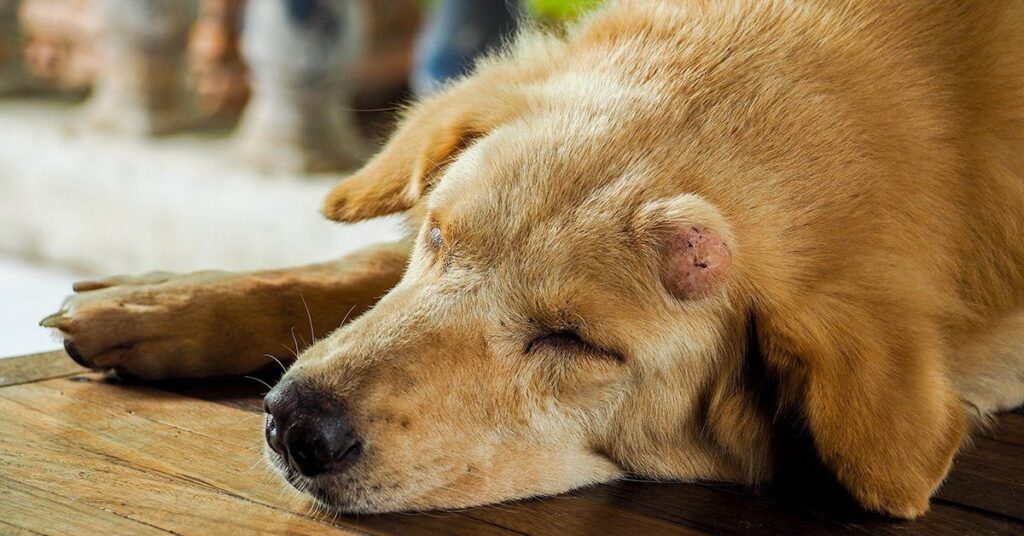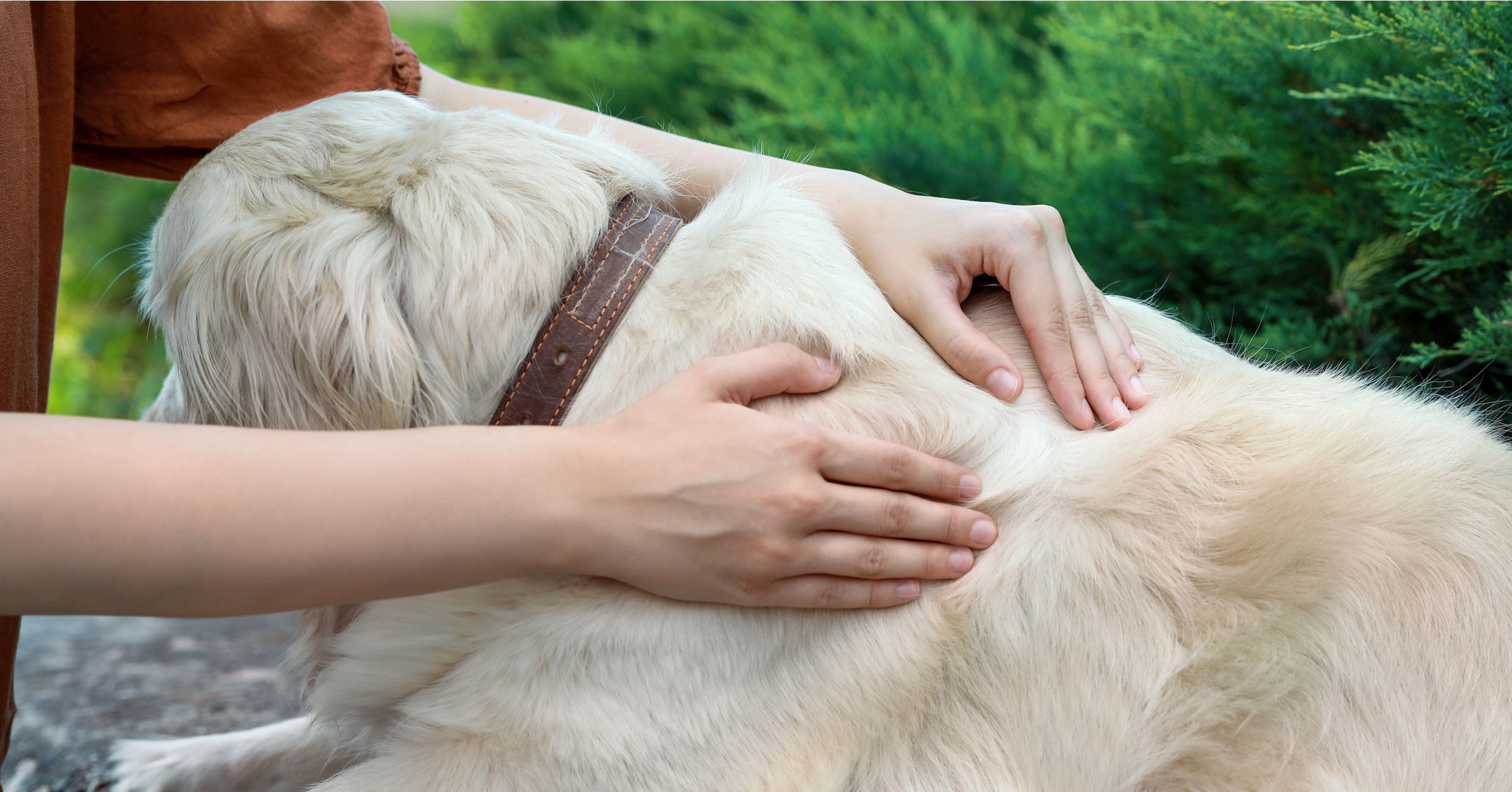Key Points
- A lump under your dog’s skin can be caused by many different factors — not just cancer.
- After finding a lump or bump, pet owners should consult their vet for a proper diagnosis.
- If you find a lump, continuously monitor the growth to check for changes to its size and shape.
You’re petting your dog and showering them with love, when suddenly — you feel a suspicious new lump underneath their skin. Your first reaction might be to panic as a thousand questions run through your head: Can it be cancerous? How long has it been there? Is my dog in pain?
Discovering sudden lumps under your dog’s skin can be a frightening experience, and moments like this remind us that — just like humans — dogs get sick, too. The last thing you want is for your fur-ever pal to go through an unexpected health scare. However, there are various reasons for lumps and bumps, and many of them aren’t life-threatening.
Here, we’ll walk you through some common symptoms, causes, and diagnoses associated with sudden lumps under dog skin. At the end of the day, it’s crucial that you schedule an appointment with your vet and get more detailed information, as every case is different.
What you need to do:
After you find the lump, assess your dog’s body to see if there are any more lumps. Sometimes, bumps and lumps are so slow-growing that they’re difficult to notice. Dr. Jamie Whittenburg DVM explains, “All masses grow from just a few microscopic cells into larger masses that may be felt on the dog. A ‘sudden’ appearance of a mass or lump may be the owner just finding the mass for the first time, a very aggressive cancer, or even a cyst, seroma, or abscess filling with fluid.”
When you notice a bump under your dog’s skin, follow these steps:
1. Feel the bump with your fingers. Is the bump soft or hard to the touch? Is it dry or oozing fluid? Make sure to take note so you can relay these details back to your vet.
2. Measure the size of the bump. Take accurate measurements of your dog’s bump, especially if you think it appeared all of a sudden. That way, when you meet your vet, you can have it measured again to see if there has been any abnormal growth.
3. Take note of the bump’s color and texture. Though it might be difficult to assess the physical appearance of a bump if your dog has long fur, try your best to take note of any discoloration or strange skin textures.
4. Monitor for other abnormal symptoms. Aside from the bump, is your dog eating and drinking normally? How is their temperament? If anything seems out of the ordinary, bring it up during your visit.
5. Contact your vet as soon as possible. There’s no way to get a proper diagnosis and treatment options without seeking medical expertise. After your initial observations, call your vet and try to meet them sooner rather than later. Although there’s a good chance your dog’s bump is benign, you don’t want to wait to find out.
6. Don’t panic. You love your canine companion, and so it’s easy to jump 10 steps ahead to the worst-case scenario. But this doesn’t help you — or your pup! Take it one step at a time.
Lumps, bumps & growths: The most common causes
There are several reasons you might find sudden lumps under a dog’s skin — some are non-life threatening, while others are more critical. Factors like age, weight, and breed matter as well. You may also be feeling a growth on your dog’s skin but under their fur.
Below are several common types of lumps and growths:
Warts: Caused by the papillomavirus, warts are common in dogs that don’t have strong immune systems. Warts on dogs resemble small cauliflowers and can either go away naturally or be surgically removed. Keep in mind that these warts are contagious between dogs, so if you have another puppy family member, it may be safe to separate them temporarily. If your dog has spent time in a boarding facility or doggy daycare, ask if they are aware of any outbreaks.
Abscesses: Abscesses are swollen infections where puss accumulates underneath the skin. They can be caused by an animal or insect bite. They can be painful for your dog if not treated promptly, especially if they burst. Your vet may prescribe antibiotics to curb serious infection.
Hives: Like people, dogs can get small, bumpy hives due to an allergic reaction. These bumps may get very itchy and swell due to scratching.
Skin tags: When cells like fibroblasts overreact, they can cause your dog to grow extra skin that might look like sudden bumps. Most of them are harmless, but visiting the vet is the best way to give yourself peace of mind.
Lipomas or fatty tumors: “The most common benign growth on dogs is likely the lipoma. These are squishy, moveable masses under the dog’s skin comprised of fat cells,” says Dr. Whittenburg. “They are more common in more senior dogs and overweight dogs, but may affect any dog. Unfortunately, these masses are not always benign and can be liposarcomas, which are cancerous and aggressive.”
Sebaceous cysts: Sebaceous cysts can look similar to warts, as they’re small, pimple-like bumps that form due to clogged oil glands. Breeds like the Poodle or the Bichon frise are more likely to develop these types of cysts.
Histiocytomas or button tumors: Histiocytomas are abnormal growths that take on a red, bubbly appearance. They mainly affect young pups under the age of three.
Mast cell tumors: Mast cell tumors in dogs are cancerous masses that can grow anywhere on a dog’s body. They vary in size and shape and can either be soft or hard. Because they can become more aggressive over time, it’s important to treat them as soon as possible.

Diagnosis of lumps under dog skin
Masses are either benign or cancerous, but there’s no way of knowing without consulting your vet. If you notice sudden lumps under dog skin, the best course of action is to get a clinical diagnosis.
“In general, cancerous masses grow more rapidly than benign ones,” says Dr. Whittenburg. “However, because there are so many different types of skin tumors in dogs, as well as different levels of aggressiveness, growth rate is not an accurate indicator of whether a mass is benign or malignant.”
While a physical assessment might be the first step, your vet may need to conduct additional tests to narrow down the cause with a fine needle aspirate, biopsy, or other diagnostic method.
What to expect at the vet
When it comes to identifying skin lumps on dogs, time is truly of the essence. “Waiting to see how a lump behaves may delay treatment until it has had a chance to spread, becoming a much more serious, even fatal, medical issue,” says Dr. Whittenburg.
In other words, the faster you meet with your vet, the sooner your dog can receive the treatment they need to get better.
When you meet with your vet, they may perform a simple physical examination, take blood work, and ensure that your dog isn’t presenting other concerning symptoms. Then, they’ll likely take additional tests, such as a:
- Fine needle aspiration: Your vet may use a syringe and small needle to pull cells directly from the bump and have them examined by a veterinary pathologist.
- Biopsy: This test requires your dog to be sedated or under some form of anesthesia. Depending on your dog’s case, your vet may take a small sample of the mass or remove it entirely.
- Ultrasound: An ultrasound might be helpful in getting a clear picture of the bump and determining whether it’s impacting your dog’s internal organs.
- X-ray: If your dog has cancerous lumps, an X-cancray can help determine whether the cancer has spread to other body parts.
The treatment for subcutaneous lumps on dogs varies widely. Whether your fur baby has to undergo a surgical removal, chemotherapy, or take prescribed medication, communicating with your vet will help you understand your dog’s health condition — and how you can help them recover, one step at a time.
The bottom line
Sudden lumps on or under your dog’s skin are alarming for any pup parent, but acting quickly can help alleviate worries and allow you to form a plan. Continue to keep a careful eye on the mass; you can even keep a log of your observations. Take a deep breath, acknowledge that these situations are scary, and remember that you’re not alone.
Tip: With Pumpkin Pet Insurance plans, you have the option to get 90% cash back on eligible vet bills. Ready to protect your pup’s health? Get a free quote from Pumpkin today.




